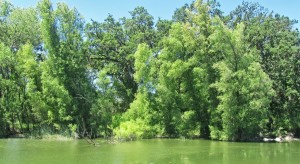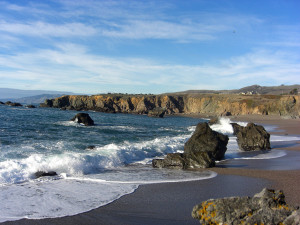For the past 35 years, Valley of the Moon Natural History Association has been helping greet and educate visitors at the Jack London State Historic Park in Sonoma County.
As of May 1, however, it’s taken charge of the whole park: 1,400 acres, 10,000 artifacts, and more than a dozen historic buildings.
It’s an unusual situation, born of California’s budget woes. The state says it no longer has the money to keep Jack London open, but the surrounding community sees the park as a vital public asset. So locals are investing their own time and money to create something new — what Valley of the Moon board president Greg Hayes calls “a community-operated state park.”
Since California announced the closures of 70 state parks last May, at least 14 parks are expected to get 1 to 5 year reprieves through new fees, donations, and takeovers by government entities. But this is the first time the state has agreed to put a nonprofit in charge and many eyes are watching.
“This is great news and a lot is going to be learned from how it works out,” says California State Parks Foundation spokesperson Jerry Emory,
Among Valley of the Moon’s assets are the experienced people on its board: among them a historian, a retired ranger, a retired park superintendent, a small business owner, and a former president of a telecommunications company.
It also has fierce support within the community. People were enraged in May 2011, when five state parks in Sonoma County, including Jack London, showed up on the closure list.
“We were showered with offers of help,” Hayes says.
Aided by Sonoma County and the Sonoma Land Trust, park advocates set up a new organization — the Parks Alliance — to help keep open Jack London and the county’s other parks open. The California State Parks Foundation helped London, too, with technical expertise and two grants totaling $12,000.
“Knowing that we would be pooling our resources and talents gave us some expectation of success,” Hayes says.

“The state grilled us at length about what our resources were, financially and professionally,” Hayes says. Finally, at the end of March a signed contract emerged. Valley of the Moon completed its proposal last October. Then came six months of intense negotiations. As they built a new kind of park, at least for the 5-year term of the contract, the two parties reached “near-impasses” several times, Hayes says, over thorny economic and legal issues such as insurance, improvements, maintenance, water quality, and law enforcement.
In the end, both sides had to make compromises. Valley of the Moon agreed to purchase about $15,000 worth of liability and property insurance annually. The nonprofit will share responsibility with the state for the park’s water system. If the nonprofit wants to restore or change park buildings or grounds, it will have to meet rigorous state and, in some cases, federal standards.
Valley of the Moon hoped that the state would pay for a “ranger-in-residence” at Jack London to serve several parks in the area—and to help with law enforcement. But the state said no. So starting May 1, there is no police presence in London.
“We’ll address security with an alarm system, existing emergency call-out services, and, if available, state park staffers elsewhere in the region,” Hayes says.
With a cash reserve of $50,000, Valley of the Moon projects $465,000 in income its first year, and expenses of $475,000. Those last two numbers are squishy, Hayes admits.
“We couldn’t get solid answers to questions about how much operations cost in the past because they were never broken out individually by park,” Hayes says. “A year from now, I’ll know a whole lot more than I know right now.”
The nonprofit will employ two nearly full-time staff at Jack London: an executive director specializing in fundraising and an operations and maintenance manager. Those two will be aided by several part-time staff and an army of volunteers, with occasional help from a state-funded curator, historian, or scientist.
The park will be open five days a week, as before. But the new management says that people can also come on the closed days, Tuesdays and Wednesdays, if they have a reservation or a special event permit. Fees will be $10 (up from $8) per car, and there will be a new $2–$4 per person charge for admission to the history-rich London cottage. But there will also be some free days, “to provide more community access,” Hayes says. A new $49 annual pass will also be available.
More special events will boost revenues and involve the community. For starters, a fundraising event for the park was held at the neighboring Benziger Family Winery on April 29th, and a piano concert is set for May 12.
All money raised at London must, by the terms of the contract, stay in the park. If fundraising goes well, Valley of the Moon hopes to initiate badly needed roof replacements and other repairs that the state has neglected for years.
“But that’s a big ‘if,’” Hayes says. “There is so much expense involved with historic preservation and restoration. The budget will have to be developed slowly over time.”
Developing more quickly is that army of volunteers. Hayes, for one, has been working about half time for no pay. “When people approach me with gratitude, I’m happy to receive that,” he says. “But I’m soon going to be asking them for more than gratitude.”
Is Valley of the Moon is creating a model that could be useful to other nonprofits struggling to save their state parks?
“It’s an experiment,” Hayes says, “but we’re hopeful that it will be a model. Cross your fingers for us.”
—————-
SUPPORT FOR PARK HEROES: Other organizations interested in supporting state parks may be eligible for the new grants for nonprofits offered by the California State Parks Foundation.

.jpg)



